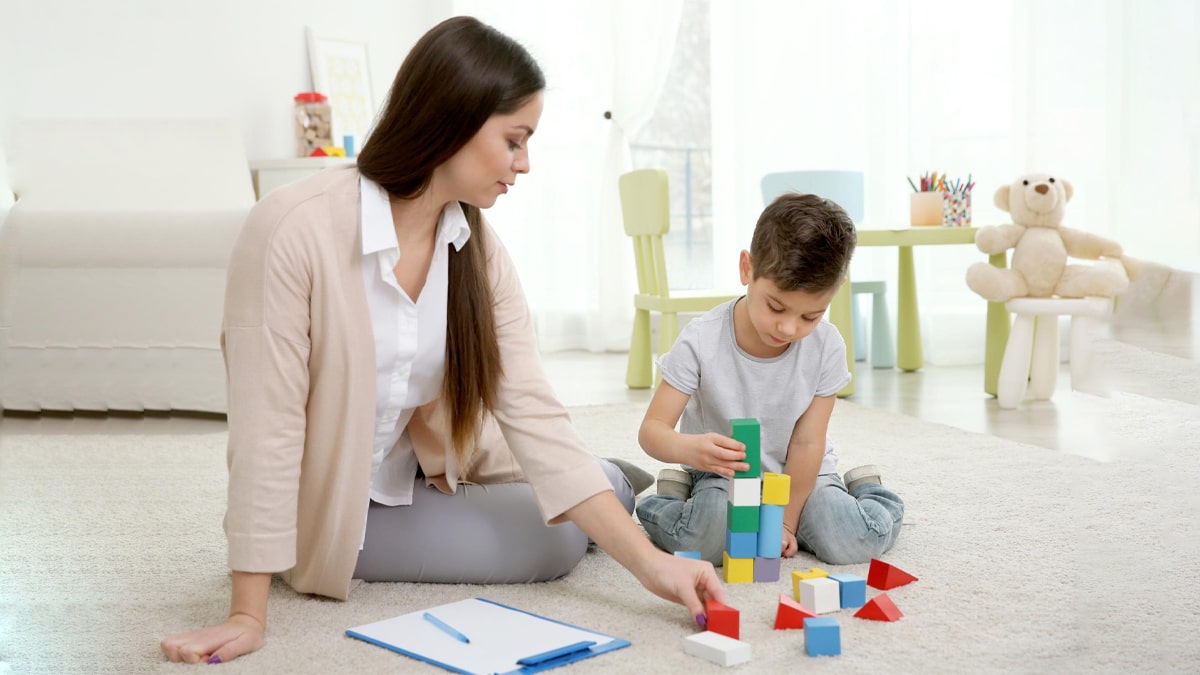Applied Behaviour Analysis Therapy, often referred to as ABA therapy, stands as a research-backed behavioral intervention that holds profound significance in the realm of Autism Spectrum Disorders (ASD).
By delving into the intricate nuances of behavior, ABA therapy aims to equip autistic children with the essential tools to navigate their daily lives with confidence.
From the fundamental act of attending school to mastering the art of communication, social interaction, and more, ABA therapy embarks on a transformative journey to empower autistic children to overcome challenges and embrace their unique potential.
ABA Therapy is not a one medicine fit all kind of solution rather it has its individualistic development. It is more of a journey, and this journey, characterized by dedication, empathy, and evidence-based practices, empowers these children to conquer challenges and, in turn, unlock the boundless potential that resides within them.
In this article, you’ll fully understand what is ABA Therapy, what are the problems faced by Autistic Children, and various other things related to Autism.
If you are a parent who suspects that your kid might have Autism, then instead of guessing it is best to have him/her diagnosed as early intervention is the safest way to tackle this situation.
What are the problems faced by an Autistic Child?
Autistic children often grapple with a range of challenges that can impact various aspects of their lives. These challenges are diverse and can vary in severity from one individual to another.
Some common problems faced by autistic children include:
- Communication Difficulties: Many autistic children struggle with verbal and nonverbal communication. They might find it challenging to express their needs, feelings, or thoughts, leading to frustration and misunderstandings.
- Social Interaction Challenges: Autistic children often face difficulties in understanding social cues, body language, and facial expressions. Building and maintaining relationships can be a struggle, which can lead to isolation.
- Repetitive Behaviours: Repetitive behaviors and routines are common among autistic children. These behaviors might include repetitive movements, fixations on specific objects, or insisting on following the same routines.
- Sensory Sensitivities: Many autistic children have heightened or diminished sensitivities to sensory stimuli such as lights, sounds, textures, and smells. These sensitivities can lead to sensory overload or avoidance of certain environments.
- Difficulty with Transitions: Changes in routine or transitioning from one activity to another can be challenging for autistic children. They might become anxious or upset when faced with unexpected changes.
- Limited Interests: Autistic children often develop intense interests in specific topics or subjects. While this can be a strength, it might limit their engagement in other activities.
- Fine and Gross Motor Challenges: Some autistic children may struggle with fine motor skills, such as writing or using utensils, and gross motor skills, affecting activities like running or jumping.
- Behavioral Challenges: Challenging behaviors like aggression, meltdowns, or self-stimulatory behaviors (stimming) can arise due to communication difficulties, sensory sensitivities, or frustration.
- Difficulty in Generalizing Skills: Autistic children might find it challenging to apply skills learned in one context to other situations, which can impact their adaptability and learning progress.
- Academic and Learning Struggles: Learning difficulties might be present in areas like reading, writing, math, and problem-solving due to challenges in attention, focus, and processing information.
How ABA Therapy can Help deal with These Problems?
Applied Behavior Analysis (ABA) therapy, a methodical and evidence-based approach, holds remarkable potential in assisting individuals with Autism Spectrum Disorders (ASD) to address a wide array of challenges.
Here’s how ABA therapy effectively addresses these difficulties:
- ABA therapy employs structured techniques to facilitate language development. It breaks down communication into smaller components, gradually building the skills necessary for effective expression and comprehension.
- ABA therapy focuses on teaching social cues, such as eye contact, body language, and turn-taking, helping individuals navigate social interactions. Role-playing and real-life scenarios are used to practice these skills in a safe environment.
- By replacing repetitive behaviors with alternative, functional activities, ABA therapy helps individuals broaden their interests and reduce fixation on specific objects or actions.
- ABA therapists work to desensitize individuals to sensory stimuli through gradual exposure, allowing them to adapt to their environment without experiencing overwhelming sensory reactions.
- ABA therapy introduces visual schedules and prompts to ease transitions, enabling individuals to anticipate changes and adjust more smoothly to new situations.
- Through positive reinforcement, ABA therapy encourages the exploration of diverse interests, expanding individuals’ engagement in various activities beyond their specific areas of focus.
- ABA therapists identify triggers for challenging behaviors and develop strategies to replace them with more adaptive responses. Individuals learn coping mechanisms to manage frustration and stress.
- ABA therapy teaches individuals to generalize skills learned in one context to other settings, enhancing adaptability and ensuring skills are applicable in different scenarios.
- ABA therapy can assist with developing academic skills by breaking down tasks into manageable steps and providing targeted instruction and practice.
- ABA therapy is highly individualized, adapting strategies to match each person’s strengths, challenges, and preferences.
Some Common Questions Related to ABA Therapy
ABA therapy, when conducted by trained and qualified professionals, is considered safe and effective. Modern ABA therapy emphasizes ethical practices, individualization, and positive reinforcement.
Parents and caregivers need to collaborate closely with experienced therapists to ensure that interventions are tailored to the child’s needs and preferences while avoiding any harmful or distressing practices.
While ABA therapy is most commonly associated with Autism Spectrum Disorders (ASD), its principles and techniques can be applied to address a variety of behavioral and developmental challenges beyond autism.
ABA therapy has been used to support individuals with other conditions such as intellectual disabilities, attention-deficit/hyperactivity disorder (ADHD), anxiety disorders, and more.
ABA therapy focuses on analyzing behaviors, identifying triggers, and employing positive reinforcement to encourage desired behaviors and reduce undesired ones. It uses data-driven techniques to track progress and make informed adjustments.
Yes, ABA therapy often includes language development programs that teach individuals to communicate effectively using speech, gestures, or augmentative communication devices.
Absolutely, ABA therapy provides structured interventions to enhance social interactions, including teaching eye contact, conversation skills, sharing, and understanding social cues.




